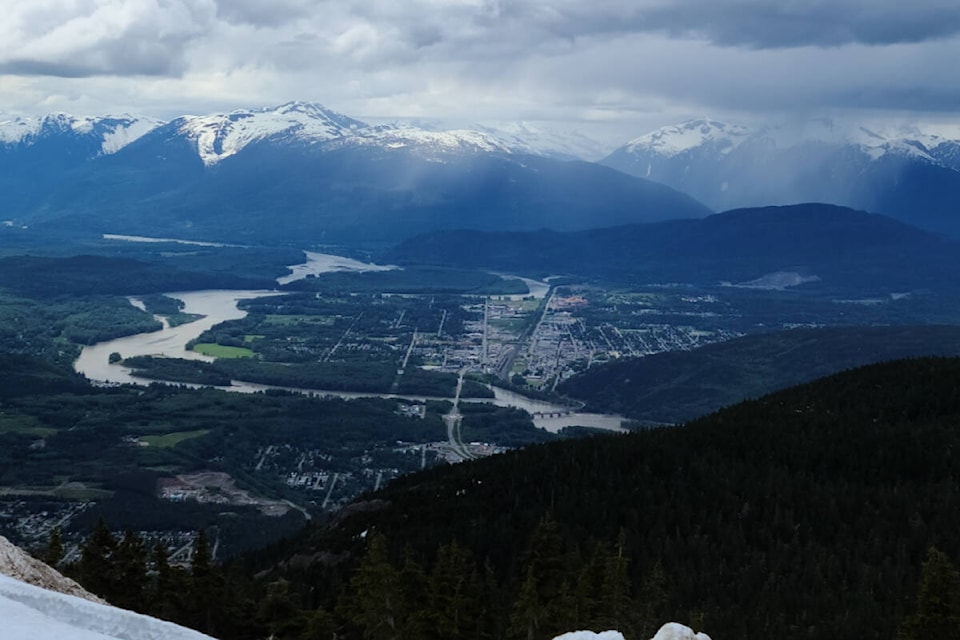The population of the City of Terrace area grew by close to 400 people since 2016, figures released by Statistics Canada for the 2021 Census show.
Since the 2016 Census, the population has grown from 11,643 to 12,017, which is an increase of 3.2 per cent. There were 5,200 private dwelling counted, with 4,873 being occupied by usual residents.
Sean Bujtas, deputy mayor, said in a statement that growth reflects the city’s status as the service and supply hub for the northwest, but Terrace will need to keep working to find new revenue sources to improve infrastructure.
“Terrace is happy to welcome new families to the community. The growth that Statistics Canada is reporting is expected with all the economic activity around us outside our community — LNG Canada, the Port of Prince Rupert, and more,” he said.
“As positive as it is to see our community grow, this growth does not help the city pay for much-needed infrastructure improvements in the community, nor the associated staffing impacts to make those improvements happen. We are a community in transition.”
The Terrace population centre, which includes the unincorporated settlement of Thornhill and residents along Queensway Dr., had a 2021 population of 14,633, up from 14,327 in 2016. That figure does not include Kitselas, Kitsumkalum or areas north of Eby St. and Orde Rd.
Expanding further, the Terrace census agglomeration recorded a total population of 19,606. That area encompasses nearly 10,000 square kilometres, stretching to north of Kalum Lake, east of Seven Sisters Provincial Park, south of Lakelse Lake, and west to around the midpoint between Terrace and Prince Rupert. The population of that area was 19,160 in 2016 and grew by 2.3 per cent.
Deklan Corstanje, said that the growth seen in Terrace outpaced the city’s own projections of a 2.85 per cent growth trend from 2015 to 2031.
“The Statistics Canada data shows a faster rate than anticipated; however, looking at the population survey and estimate we did in 2020, we’re within the margin of error and therefore likely still on track for our estimates,” he said in an emailed statement.
“We got denser by seven more people per square kilometre, but our residential development doubled that growth at six per cent. We would need an in-depth analysis to know more, but this likely indicates there is further population growth to come and a continuation of current economic trends.”
Elsewhere in the northwest, Kitimat’s population rose by 1.3 per cent to 8,236, and Prince Rupert saw a very slight increase of 80 new residents to hit 12,300 people in 2021.
Since the last census, the population of Smithers shrunk from 5,401 to 5,378 people.
As a whole. the population of British Columbia has grown by 7.6 per cent since 2016 to 5,000,879 people, up from 4,648,055 in 2016.
Canada’s overall population grew 5.2 per cent to 36,991,981. B.C.’s population growth was beaten only the Yukon, which grew by 12.1 per cent, and Prince Edward Island, which grew by eight per cent. B.C. remains the third largest province in Canada.
Statistics Canada noted that the population grew fastest in 2019 and slowed to its lowest rate in 2020 as the pandemic hit, closing Canada’s borders.
The agency points to one of its studies done late last year that suggested adults under 50 wanted to have fewer children than previously planned.
At this point, the agency said, Canada’s isn’t headed to a situation where deaths outnumber births like in Italy and Japan, at least within the next 50 years.
The details released this week are the first set of findings from last year’s census taken against the backdrop of the COVID-19 pandemic.
— With files from Katya Slepian and the Canadian Press
